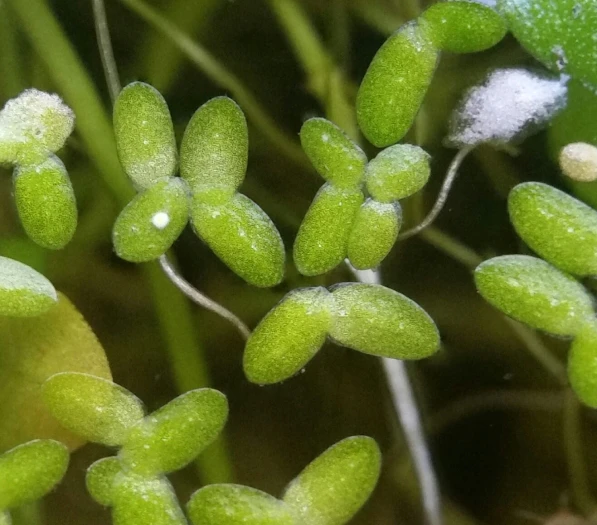Valdivia Duckweed
(Lemna valdiviana)
Valdivia Duckweed (Lemna valdiviana)
/
/

Zihao Wang
CC BY 4.0
Image By:
Zihao Wang
Recorded By:
Copyright:
CC BY 4.0
Copyright Notice:
Photo by: Zihao Wang | License Type: CC BY 4.0 | License URL: http://creativecommons.org/licenses/by/4.0/ | Rights Holder: Zihao Wang | Publisher: iNaturalist | Date Created: 2019-06-23T20:11Z |





















Estimated Native Range
Climate Requirements for Lochearn, Maryland
| This Plant | Your Site | Plant Suitability for Your Location | ||
|---|---|---|---|---|
| • Precipitation | 5" - 157" | 45" | Aquatic | Aquatic |
| • High Temp. | 60°F - 98°F | 87°F | Your summer temperatures are normal for this plant. | Excellent |
| • Low Temp. | 3°F - 73°F | 24°F | Your winter temperatures are normal for this plant | Excellent |
This plant should grow well at your location with about N inches per year (Y minutes per month) of irrigation.
Summary
Lemna valdiviana, commonly known as Valdivia duckweed, is a minute, free-floating aquatic perennial herb native to a wide range of freshwater habitats including ponds, marshes, slow-moving streams, and protected waters in the Americas. It forms dense mats on the surface of calm waters, which can be beneficial for water quality by reducing algae growth due to nutrient competition. Valdivia duckweed is one of the smallest flowering plants, with individual plants measuring just a few millimeters across. It reproduces rapidly, primarily through vegetative means, making it a highly efficient colonizer of suitable aquatic environments.
Valdivia duckweed is valued for its role in phytoremediation, as it can absorb heavy metals and other pollutants from water. It is also used in aquaculture and wastewater treatment systems. In cultivation, it requires stagnant or slow-moving freshwater and can tolerate a wide range of pH levels. While it prefers nutrient-rich waters, it can survive in lower nutrient conditions as well. However, due to its rapid growth rate, Lemna valdiviana can become problematic, potentially clogging waterways and outcompeting native aquatic plants. It is considered potentially invasive outside its native range, so gardeners should consult local regulations before introducing it to their ponds or water features.CC BY-SA 4.0
Valdivia duckweed is valued for its role in phytoremediation, as it can absorb heavy metals and other pollutants from water. It is also used in aquaculture and wastewater treatment systems. In cultivation, it requires stagnant or slow-moving freshwater and can tolerate a wide range of pH levels. While it prefers nutrient-rich waters, it can survive in lower nutrient conditions as well. However, due to its rapid growth rate, Lemna valdiviana can become problematic, potentially clogging waterways and outcompeting native aquatic plants. It is considered potentially invasive outside its native range, so gardeners should consult local regulations before introducing it to their ponds or water features.CC BY-SA 4.0
Plant Description
- Plant Type: Herb
- Height: 0-0.1 feet
- Width: 0-0.1 feet
- Growth Rate: Rapid
- Flower Color: Green
- Flowering Season: Spring, Summer, Fall
- Leaf Retention: Deciduous
Growth Requirements
- Sun: Full Sun, Part Shade
- Water: High
- Drainage: Standing
Common Uses
Edible*Disclaimer: Easyscape's listed plant edibility is for informational use. Always verify the safety and proper identification of any plant before consumption., Low Maintenance, Water Garden
Natural Habitat
Freshwater habitats including ponds, marshes, slow-moving streams, and protected waters in the Americas
Other Names
Common Names: Valdivia’s Duckweed, Southern Duckweed, Pale Duckweed
Scientific Names: Lemna valdiviana, Lemna cherokensis, Lemna cherokensis, Lemna cyclostasa, Lemna cyclostasa, Lemna minor var. cyclostasa, Lemna minuta, Lemna platyclados, Lemna torreyi
GBIF Accepted Name: Lemna valdiviana